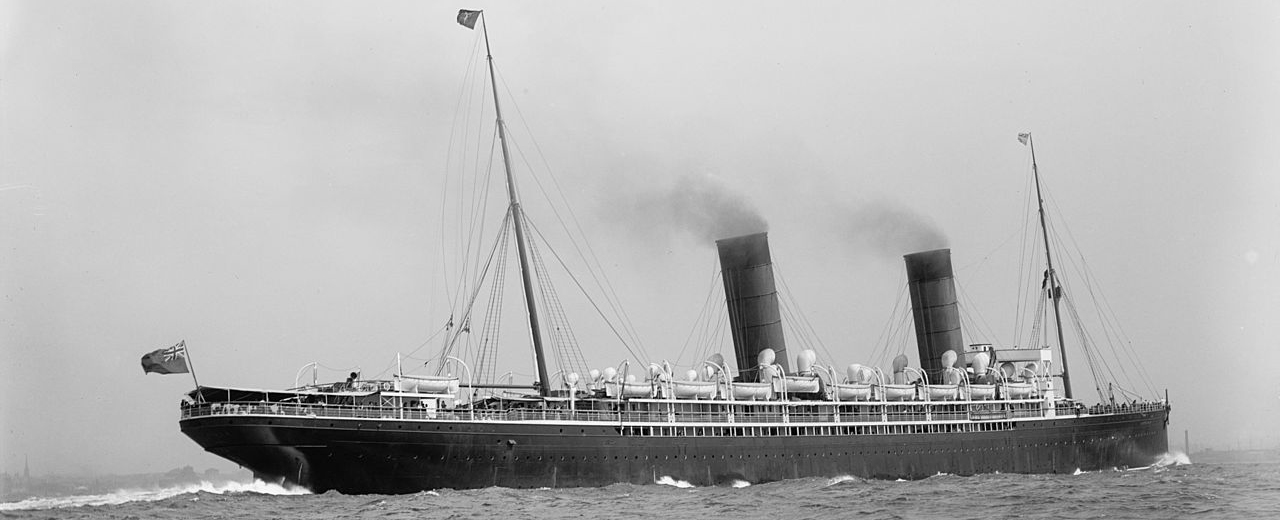
R.M.S Lucania and Campania were British ocean liners of the Cunard Line built by Fairfield of Govan in Scotland. Campania was launched on 8 September 1892 and her sister Lucania on 2 February 1893. Campania became the largest and fastest passenger liner afloat in 1893. By crossing the Atlantic in less than six days she won the Blue Riband previously held by SS City of Paris of Inman line. She won another time and held it until 1898 and yet still she was marginally slower than her sister but could sustain top speed for longer.
Ships that Interested the Admiralty
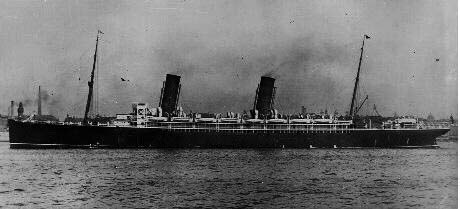
The link between these two liners and the admiralty were present since the start. There was an attaché of the Royal Navy present at the HQ of all great lines companies, to be sure if the ships types had some potential to be converted for military use in wartime. At the start in 1890, Cunard knew that competition increased on the north atlantic route and wanted to retain the upper hand, by ordering two ships that would be the fastest and most luxurious.
The deal was that Cunard would receive money from the Government, in return for constructing ships to admiralty specifications, on condition that they would go the naval reserve list, and in wartime serve as armed merchant cruisers as required by the government. In the Hispano-American war of 1898 later, the British admiralty saw with interest the way the USN complemented its relative weakness compared to the armada by requisitioning several liners and converting them into auxiliary cruisers. They played their role, notably to ensure the Spaniards would not prey on its main assets and captured its ships in the Atlantic. The practice was soon implemented during the Boer war by the Royal Navy as well, but as troopships. In any case, both liners were on the list of potential prime candidates for such conversion. It however never happened before the very end of their service (see later).
Specifications:
The largest VTE steam engines ever built

Both liners were built at Fairfield Shipbuilding and Engineering Company or Govan, more accustomed to warships. There was designed a large, twin-screw steamern powered by triple expansion engines and construction started in 1891, with all plans ready just 43 days after Cunards’ order. They were fitted with the largest triple-expansion engines on a Cunard ship and largest in the world at the time, even largest ever constructed, the very limits of development before turbine technology. This colossus stand at 47 feet () from the double-bottom floor of the engine room to the superstructure (five decks). These were of five cylinders type with two high-pressure ones (37 in or 940 mm) in diameter, one intermediate-pressure cylinder (79 in or 2,000 mm) and two low-pressure cylinders (98 in or 2,500 mm) with a stroke of 69 in (1,800 mm).
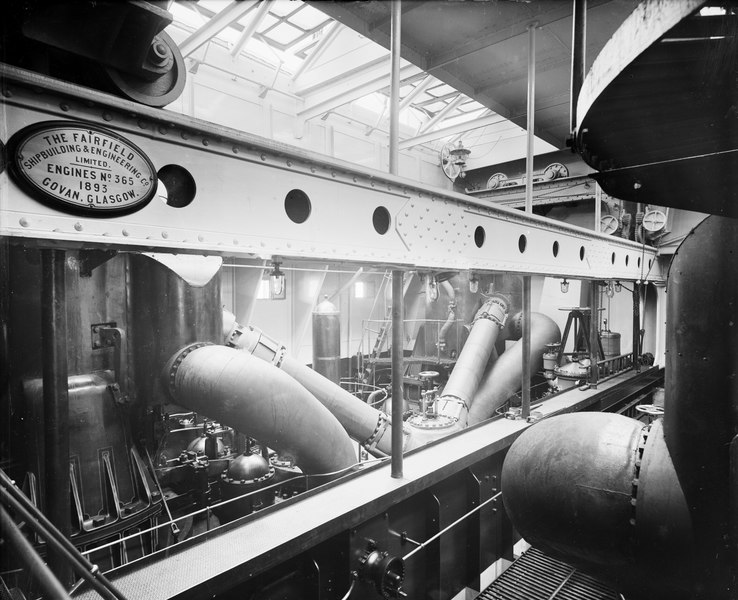
Steam was raised from 12 double-ended scotch boilers 18 ft (5.5 m) in diameter, each dotted with eight furnaces. A single single-ended boiler was used for auxiliary machinery and there was even a smaller “donkey boiler” for when the ship was in port. Boiler pressure was 165 lb for a total output of 31,000 ihp (23,000 kW), driving the shafts to 79 rpm, enough for 22 knots (41 km/h), and on trials up to 23.5 knots, which was reparkable for the time. Only torpedo boats and destroyers reached these speeds in calm seas at the time. The average cruiser was limited to 20 knot at best.
Both engines were located in a separate watertight engine compartment in case of hull breach and both vessels had 16 transverse watertight compartments with watertight doors. But unlike the ships that followed, notably Titanic, they were to be manually closed, on command from the bridge telegraph. With two compartments flooded she was still afloat.
Ultra-luxurious Passenger accomodations
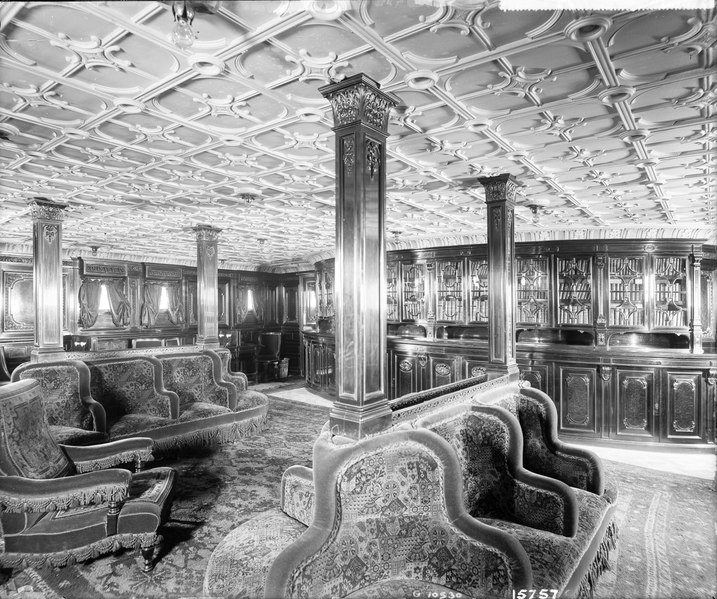
1st class library
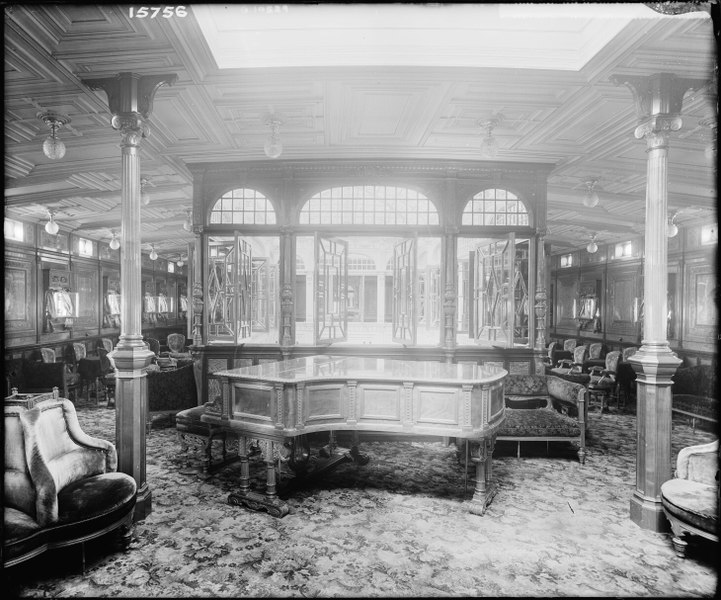
1st class music room
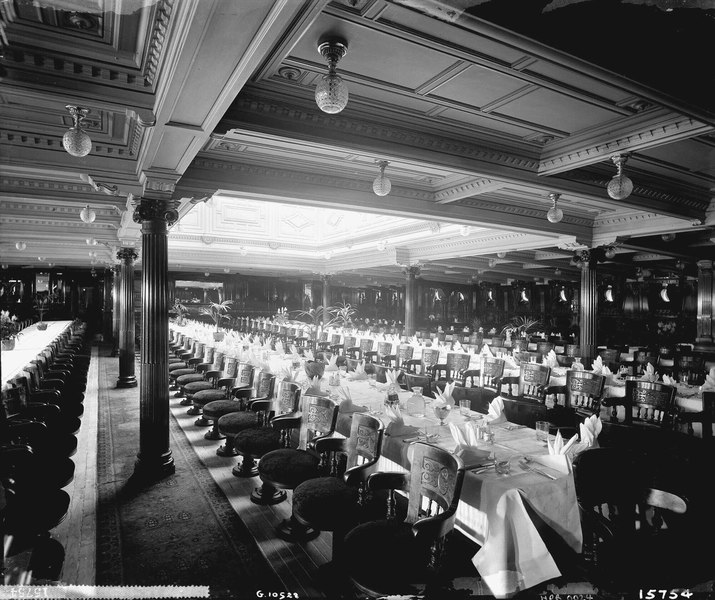
1st class dining saloon
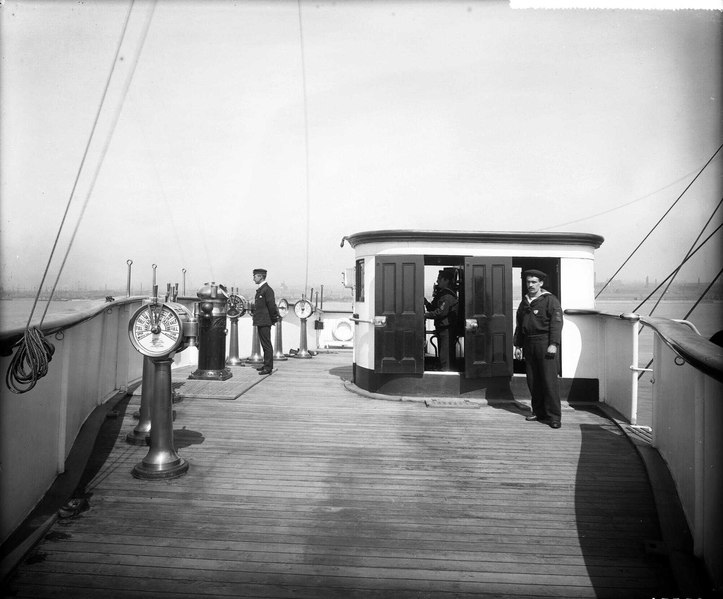
flying bridge, also on RMS Lucania
As Cunard wanted, and independent of the Admiralty, were designed the most luxurious first-class passenger liners enywhere and their interiors were at the very peak of Victorian opulence, to such extent this was never repeated on any other ship, even the three Olympic class. They were loaded to such a point of bordering to “grandiose vulgarity, the classical syntax debased to mere jargon” according to naval historian Basil Greenhill. The first-class public rooms and en-suite staterooms were generally heavily panelled in oak, satinwood and mahogany, thickly carpeted and fitted with Velvet curtains over all windows and portholes.
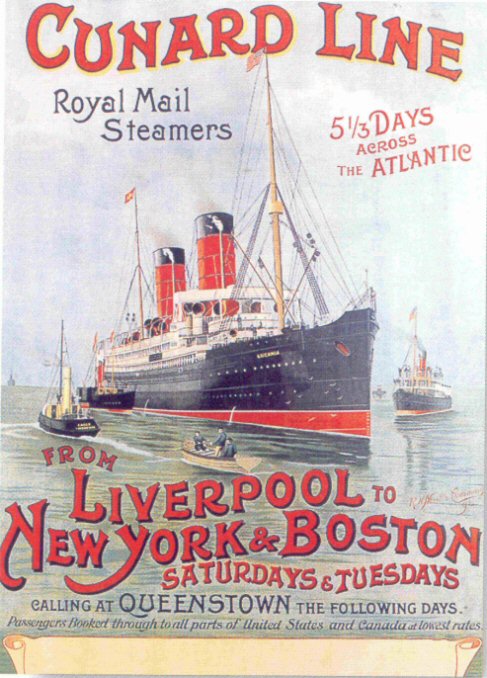
The furniture upholstered in French Renaissance style was seen all around in the first-class entrance hall, and Elizabethan style in the 1st class smoking room with finely carved and painted oak panels around the open fireplace. Perhaps the finest room was the first class dining saloon: It was 10 feet (3.0 m) high, 98 feet (30 m) long, 63 feet (19 m) wide. The grandest ever put into a liner so far. It was lit naturally by a well that rose through three decks to a skylight in a “modified Italian style”. There was coffered ceiling in white and gold and ionic pillars to support it, panelled walls in Spanish mahogany with ivory inclusions, richly carved with pilasters.
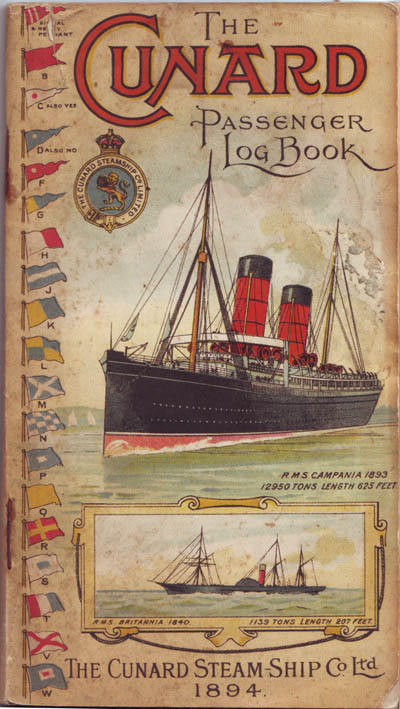
These were all a first for any passenger liner. But a bonanza for any minor fire incident. In case of such event, the ships would have been carbonized in short order without any control and the admiralty added a clause to have all these fixtures removed, leaving the metal inside barebone for any requisition.
⚙ specifications |
|
| Displacement | 12,950 GRT, 4,973 NRT, 18,450 tons |
| Dimensions | 622 x65 x 29.9 ft (189.6 x 19.9 x10m) |
| Propulsion | 2 shafts 3-bladed prop. 2x 5-cyl. VTE, 12 DE Scotch boilers, 31,000 shp |
| Speed | 22 knots (40.5 km/h or 25.3 mph), top 23.5 knots |
| Range | Coal, Transatlantic |
| Passengers | 600 1st class, 400 2nd class, 1,000 3rd class. 2,000 total |
| Crew | 424 |
The RMS Campania in service
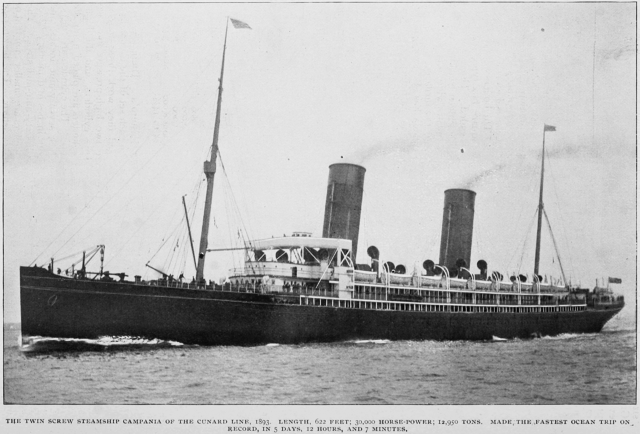
RMS Campania has been laid down on 22 September 1891, and when launched on 8 September 1892 she was Christened Lady Burns, making her Maiden voyage on 22 April 1893. She made several crossing without incidents; However on 21 July 1900, she collided and sank the British barque Embleton, 30 miles (48 km) NE of Tuskar Light, Irish Channel in the fog.
Not long after in 1901 after her sister Lucania was successfully tested with the Marconi wireless system, Campania followed suite, and not only both were the first to be in permament contact with the coast on both sides of the Atlantic but they were also the best informed of vital ice bulletins. In 1905 she became the first liner to have this permanent radio connection. After 14 years of service during which competition came from a new generation of massive four-funnelled German liners, Cunard reacted by the Lusitania class, soon competing to rival White star’s Olympic-class. So after 1908, both Campanian class ships were to be replaced.
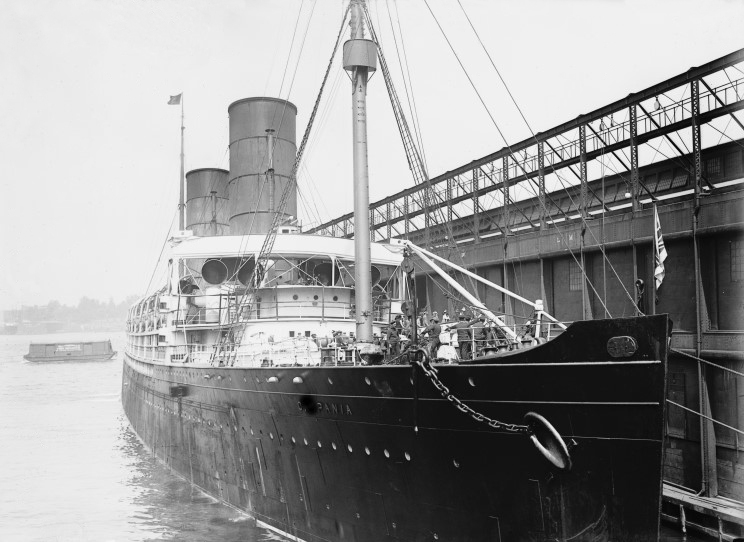
By 1914 RMS Aquitania was to replace Campania and she made her 250th voyage on 25 April 1914. Back to Liverpool, she changed owner, going to the Anchor Line and starting voyages from Glasgow to New York. When Aquitania in August 1914, after just three voyages, was requisitioned as a fully armed merchant cruiser, Campania was recalled to take her place but only made three more voyages before being sold for scrap. After coming back for her last trip on 26 September 1914 she was mothballed, pending scrapping when saved by the Royal Navy. This story is developed with HMS Campania.
The RMS Lucania in service
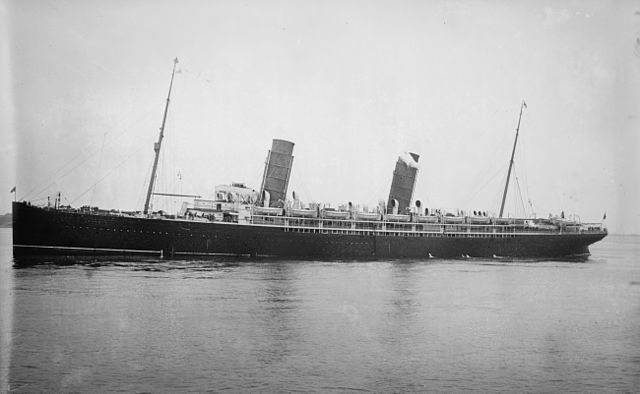
Lucania and Campania were Cunard’s major passenger liners for 14 years, until dethroned by new four-funnelled German liners (SS Kaiser Wilhelm der Grosse in 1897 and following). This competition push Cunard to release in 1907 the famous RMS Lusitania and RMS Mauretania. When it was decided that Lucania was no longer needed, she made her last voyage on 7 July 1909, being laid up at the Huskisson Dock in Liverpool. On 14 August 1909 a fire broke out, ans devastated her to the point she partially sank at her berth. Five days later, she sold for scrap and what remained of her luxurious interior were auctioned.

Another particular of the class, was that on 15 June 1901 RMS Lucania became the first Cunard liner fitted with a Marconi wireless system. The installation was trialled long before it was aslo adopted on RMS Campania, on 21 September the same year, and shortly after they made the first at-sea exchange of wireless transmitted ice bulletin. By October 1903, Guglielmo Marconi wanted to make extra experiments on RMS Lucania and tested contact with more distant radio stations in Nova Scotia and Poldhu. This enabled to stay in contact with her for her whole Atlantic crossing, both from Europe and Canadian coast. On 10 October she published her onboard journal to happy passengers thanks to news transmitted by wireless telegraphy underway. The newspaper “Cunard Daily Bulletin” became a regular publication for all voyages and another nice addition to Cunard’s offer to her 1st class passengers.
Sources
The Cunard Royal Mail Steamers Campania and Lucania. Patrick Stephens Limited.
Greenhill, Basil (1979). Merchant Steamships. London: B.T. Batsford Limited.
Hancock, H.E. (1950). Wirekess at Sea. Chelmsford: Marconi International Marine Communication Company.
Kennedy, John (1903). History of Steam Navigation. Liverpool: Charles Birchall Limited.
Lucania on wikipedia
clydesite.co.uk shipping
clydesite.co.uk lucania
campania on chriscunard.com

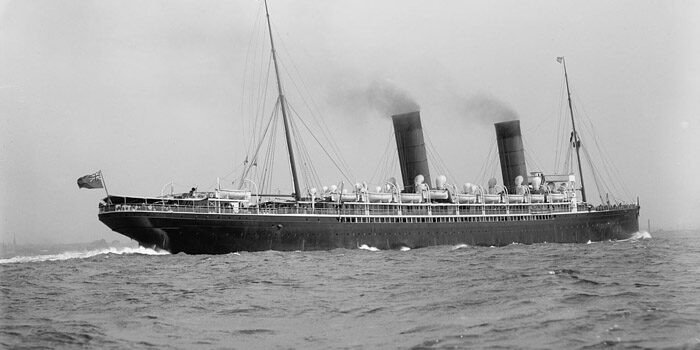

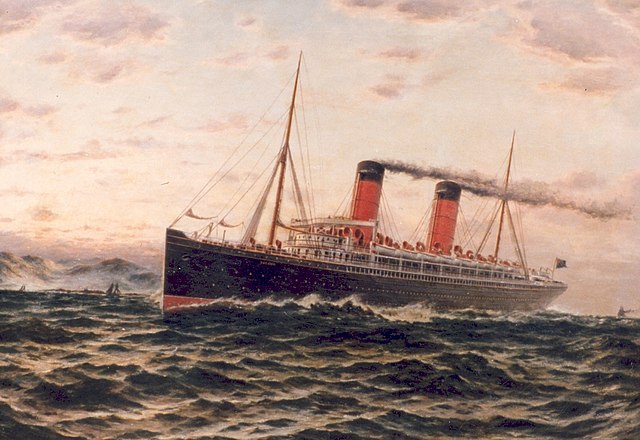
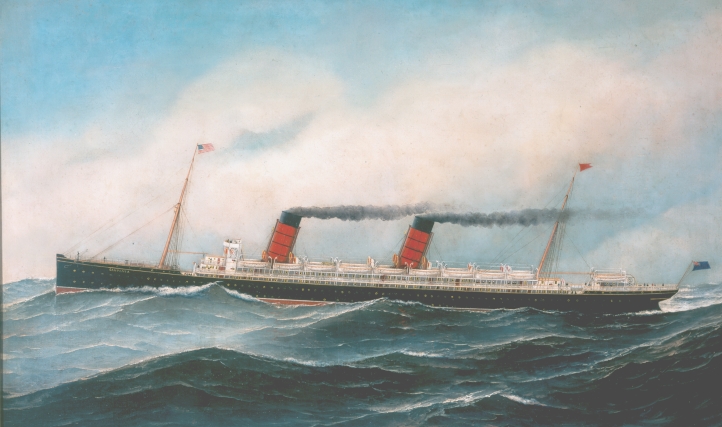
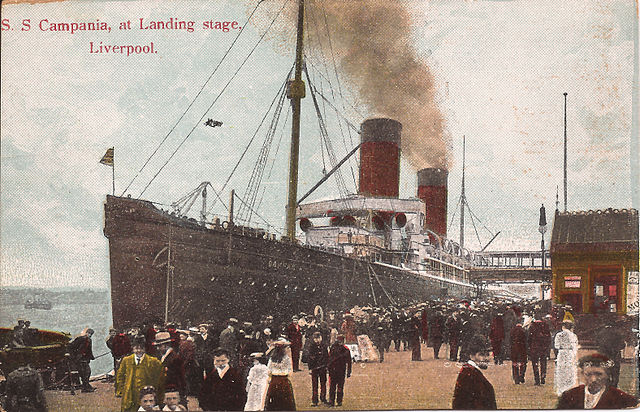
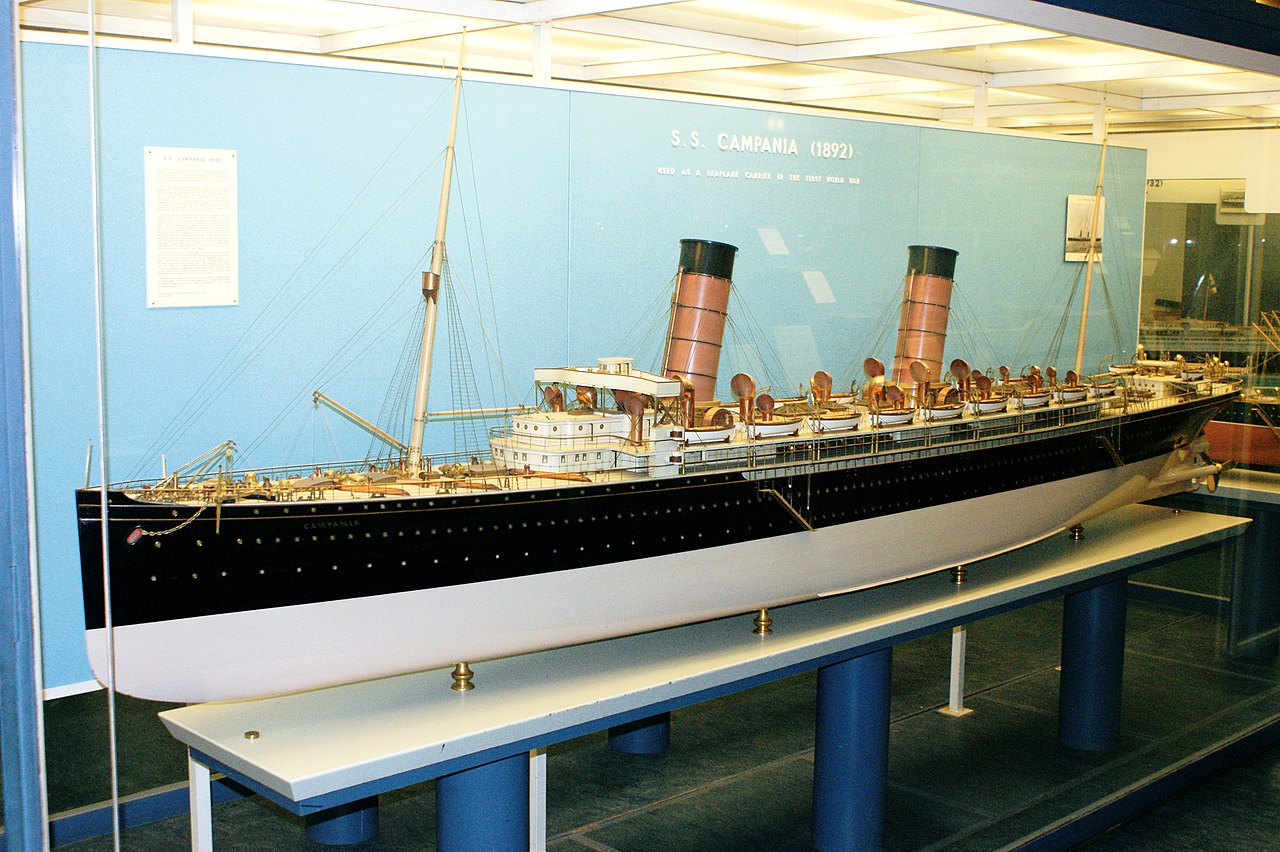
 Latest Facebook Entry -
Latest Facebook Entry -  X(Tweeter) Naval Encyclopedia's deck archive
X(Tweeter) Naval Encyclopedia's deck archive Instagram (@navalencyc)
Instagram (@navalencyc)





 French Navy
French Navy Royal Navy
Royal Navy Russian Navy
Russian Navy Armada Espanola
Armada Espanola Austrian Navy
Austrian Navy K.u.K. Kriegsmarine
K.u.K. Kriegsmarine Dansk Marine
Dansk Marine Nautiko Hellenon
Nautiko Hellenon Koninklije Marine 1870
Koninklije Marine 1870 Marinha do Brasil
Marinha do Brasil Osmanlı Donanması
Osmanlı Donanması Marina Do Peru
Marina Do Peru Marinha do Portugal
Marinha do Portugal Regia Marina 1870
Regia Marina 1870 Nihhon Kaigun 1870
Nihhon Kaigun 1870 Preußische Marine 1870
Preußische Marine 1870 Russkiy Flot 1870
Russkiy Flot 1870 Svenska marinen
Svenska marinen Søværnet
Søværnet Union Navy
Union Navy Confederate Navy
Confederate Navy Armada de Argentina
Armada de Argentina Imperial Chinese Navy
Imperial Chinese Navy Marinha do Portugal
Marinha do Portugal Mexico
Mexico Kaiserliche Marine
Kaiserliche Marine 1898 US Navy
1898 US Navy Sovietskiy Flot
Sovietskiy Flot Royal Canadian Navy
Royal Canadian Navy Royal Australian Navy
Royal Australian Navy RNZN Fleet
RNZN Fleet Chinese Navy 1937
Chinese Navy 1937 Kriegsmarine
Kriegsmarine Chilean Navy
Chilean Navy Danish Navy
Danish Navy Finnish Navy
Finnish Navy Hellenic Navy
Hellenic Navy Polish Navy
Polish Navy Romanian Navy
Romanian Navy Turkish Navy
Turkish Navy Royal Yugoslav Navy
Royal Yugoslav Navy Royal Thai Navy
Royal Thai Navy Minor Navies
Minor Navies Albania
Albania Austria
Austria Belgium
Belgium Columbia
Columbia Costa Rica
Costa Rica Cuba
Cuba Czechoslovakia
Czechoslovakia Dominican Republic
Dominican Republic Haiti
Haiti Hungary
Hungary Honduras
Honduras Estonia
Estonia Iceland
Iceland Eire
Eire Equador
Equador Iran
Iran Iraq
Iraq Latvia
Latvia Liberia
Liberia Lithuania
Lithuania Mandchukuo
Mandchukuo Morocco
Morocco Nicaragua
Nicaragua Persia
Persia San Salvador
San Salvador Sarawak
Sarawak Uruguay
Uruguay Venezuela
Venezuela Zanzibar
Zanzibar Warsaw Pact Navies
Warsaw Pact Navies Bulgaria
Bulgaria Hungary
Hungary

 Bundesmarine
Bundesmarine Dutch Navy
Dutch Navy Hellenic Navy
Hellenic Navy Marina Militare
Marina Militare Yugoslav Navy
Yugoslav Navy Chinese Navy
Chinese Navy Indian Navy
Indian Navy Indonesian Navy
Indonesian Navy JMSDF
JMSDF North Korean Navy
North Korean Navy Pakistani Navy
Pakistani Navy Philippines Navy
Philippines Navy ROKN
ROKN Rep. of Singapore Navy
Rep. of Singapore Navy Taiwanese Navy
Taiwanese Navy IDF Navy
IDF Navy Saudi Navy
Saudi Navy Royal New Zealand Navy
Royal New Zealand Navy Egyptian Navy
Egyptian Navy South African Navy
South African Navy






























 Ukrainian Navy
Ukrainian Navy dbodesign
dbodesign